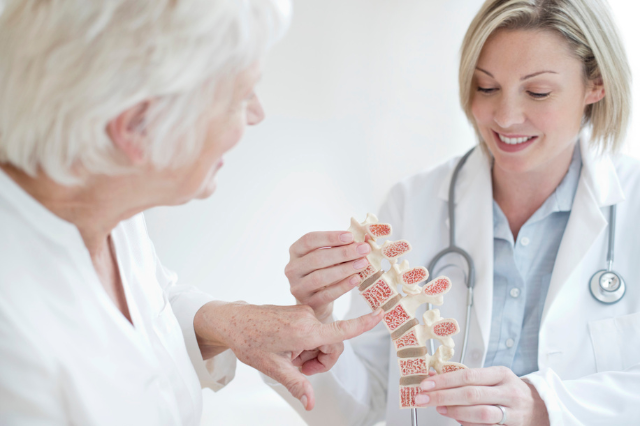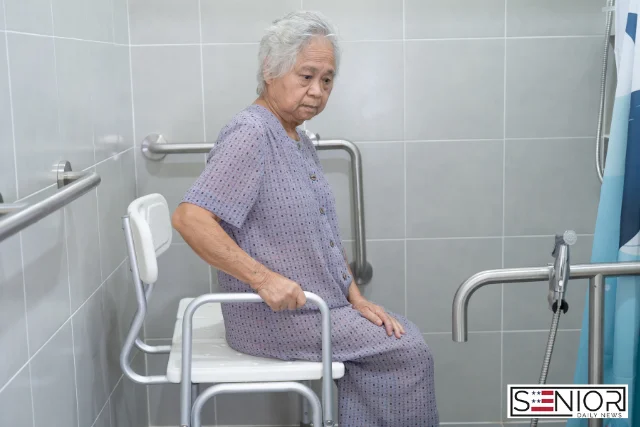Understanding and Preventing Osteoporosis in the Age of 60

Turning 60 can be a beautiful chapter of life—retirement, more time with loved ones, and a focus on health and well-being. However, one health concern that often becomes more relevant at this age is osteoporosis. Often called the “silent disease,” osteoporosis weakens bones over time, increasing the risk of fractures from even minor falls or movements.
For men and women over 60, understanding what osteoporosis is and how to prevent it can make all the difference in staying active, independent, and pain-free throughout the later years.
In this article, we’ll explore the causes, risks, and symptoms of osteoporosis, and most importantly, provide effective prevention strategies tailored for those in their 60s and beyond.
What Is Osteoporosis?
Osteoporosis is a condition where bones lose density and strength, becoming fragile and more prone to fractures. While bones naturally become thinner with age, osteoporosis accelerates this process, leading to serious health risks.
The word “osteoporosis” literally means “porous bones.” Under a microscope, healthy bone looks like a honeycomb. In osteoporotic bones, the holes and spaces are much larger, reducing bone strength and increasing brittleness.
Why Osteoporosis Matters After 60
While bone loss can begin as early as your 30s, the most significant loss tends to happen after age 50, especially for postmenopausal women due to a drop in estrogen. By age 60, the risk of osteoporosis-related fractures increases dramatically.
- 1 in 2 women and 1 in 4 men over 50 will suffer an osteoporosis-related fracture in their lifetime
- Hip fractures in seniors often lead to reduced mobility, loss of independence, and even increased mortality
- Vertebral fractures may cause back pain, stooping, and height loss
This makes early detection and prevention in your 60s critically important.
Common Risk Factors for Osteoporosis After 60
Uncontrollable Factors:
- Age: Risk increases with age
- Gender: Women are more prone, especially postmenopause
- Family History: Genetic predisposition
- Body Frame: Small, thin-boned individuals are at greater risk
Controllable Factors:
- Low calcium and vitamin D intake
- Lack of physical activity
- Smoking and excessive alcohol consumption
- Chronic conditions (like thyroid disorders, rheumatoid arthritis)
- Certain medications (such as corticosteroids or cancer treatments)
Symptoms of Osteoporosis
Osteoporosis is often called the “silent disease” because you might not know you have it until a fracture occurs. However, some warning signs include:
- Loss of height over time
- Back pain from collapsed or fractured vertebrae
- A stooped or hunched posture
- Bone fractures from minor injuries
This is why bone density screenings (called DEXA scans) are crucial, especially after age 60.
Bone Density Test (DEXA Scan): What to Expect
A DEXA scan (Dual-energy X-ray Absorptiometry) measures your bone mineral density and compares it to the average for a healthy young adult.
- T-score between -1 and -2.5: Low bone mass (osteopenia)
- T-score below -2.5: Osteoporosis
It’s a painless, non-invasive scan, and doctors often recommend it every 2–5 years after age 60 depending on your risk level.
How to Prevent Osteoporosis After 60
The good news? Osteoporosis is preventable and manageable—even after 60. Prevention starts with simple but powerful lifestyle choices.
1. Ensure Adequate Calcium Intake
Calcium is the building block of bones. After 60, the body absorbs calcium less efficiently, so increasing intake is essential.
Recommended intake:
- Women 60+: 1,200 mg/day
- Men 60+: 1,000–1,200 mg/day
Good sources:
- Dairy (milk, yogurt, cheese)
- Leafy greens (kale, bok choy)
- Fortified foods (orange juice, cereals)
- Almonds, chia seeds, tofu
2. Don’t Forget Vitamin D
Vitamin D helps your body absorb calcium. Without it, even a calcium-rich diet isn’t enough.
Recommended intake: 800–1,000 IU/day (consult your doctor)
Sources:
- Sun exposure (10–20 minutes/day)
- Fatty fish (salmon, mackerel)
- Fortified milk and cereals
- Supplements, if needed
3. Engage in Weight-Bearing Exercise
Physical activity strengthens bones and muscles, improves balance, and prevents falls.
Best exercises for bone health:
- Walking
- Hiking
- Tai chi
- Dancing
- Resistance training (using bands or light weights)
Caution: Avoid high-impact exercises if you’re already diagnosed with osteoporosis—opt for low-impact alternatives and always consult a healthcare provider.
4. Avoid Smoking and Excessive Alcohol
Smoking reduces bone mass, while heavy alcohol interferes with calcium absorption and balance—both of which can lead to fractures.
Limit alcohol to no more than one drink per day for women and two for men.
5. Prevent Falls at Home
Falls are a major cause of fractures in seniors. Simple changes can drastically reduce your risk:
- Use non-slip mats in the bathroom
- Install handrails and grab bars
- Keep floors free from clutter and cords
- Ensure adequate lighting in hallways
- Wear well-fitting, non-skid shoes
When Medication Is Necessary
If you’re diagnosed with osteoporosis, your doctor may recommend medications to slow bone loss or build new bone.
Common types include:
- Bisphosphonates (e.g., Fosamax, Reclast)
- Selective Estrogen Receptor Modulators (SERMs)
- Parathyroid hormone analogs
- Monoclonal antibodies (e.g., Prolia)
These medications are typically prescribed after a bone fracture or for individuals with a very low T-score. They require monitoring for side effects and may be combined with lifestyle changes.
Mental and Emotional Impact
Living with osteoporosis or even just being at risk can take an emotional toll—fears of falling, limitations in activity, or body image concerns due to posture changes.
Support matters.
- Join local or online support groups
- Work with a physical therapist or personal trainer familiar with senior fitness
- Practice gentle yoga or mindfulness for stress reduction
Silver Years, Strong Bones
Aging doesn’t mean fragility is inevitable. With proper knowledge, screening, and healthy choices, you can enjoy your 60s and beyond with strength, mobility, and confidence.
Osteoporosis may be silent, but your actions speak volumes. Take the proactive route today to protect your bones tomorrow.
FAQs: Osteoporosis After 60
Q: Is osteoporosis only a concern for women?
A: No. While women are at higher risk, men over 60 can also develop osteoporosis—especially if they have low testosterone, a poor diet, or chronic illness.
Q: Can you reverse osteoporosis?
A: You can’t completely reverse it, but you can slow or stop its progression through medication, diet, and lifestyle changes.
Q: How often should I get a DEXA scan?
A: Generally, every 2–5 years after age 60, depending on your bone density, medical history, and doctor’s recommendations.
Q: Are calcium supplements safe?
A: They’re generally safe in the right dosage. However, excessive calcium (especially from supplements) can increase the risk of kidney stones or cardiovascular problems. Consult your doctor.
Q: Is it ever too late to start prevention?
A: Absolutely not. Even if you’re already 70 or 80, strength training, diet, and fall prevention can significantly improve quality of life.
Final Thoughts
Osteoporosis might be silent, but awareness is your loudest defense. In your 60s, prevention becomes not just a medical priority, but a personal responsibility to yourself and your future. Through balanced nutrition, physical activity, screenings, and smart habits, you can stay upright, independent, and strong for many years to come.
Image Designed Using Canva






